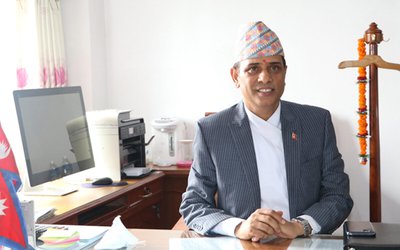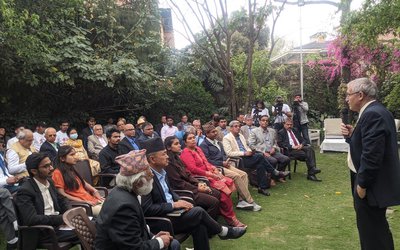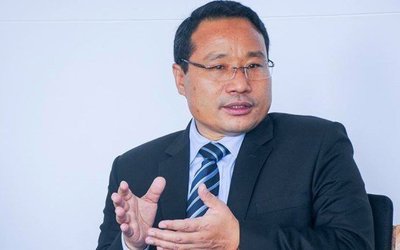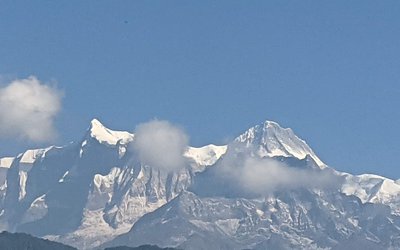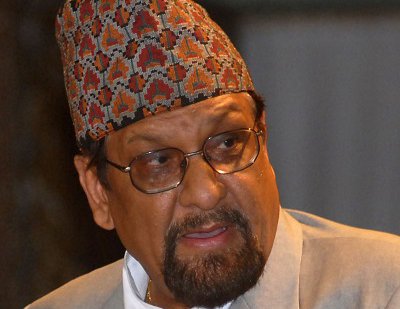
Although Finance Minister Dr.Ram Sharan Mahat proposed an international donors' meet with a good intention to give a sense of stability and boost the confidence of Nepali people, it is yet to see how Nepal's development partners respond.
With the announcement of the agreement among the major four parties, the stability of the present government is under threat. Although the agreement has said nothing about the government, CPN-UML and UCPN-Maoist have already indicated that they will not let this government to go beyond July.
Whatever the political consequences, Nepal's government officials, donor partners and experts are preparing the Post-Disaster National Assessment (PDNA). CPN-UML leader and former finance minister Surendra Pandey questioned the timing of the summit. “They are preparing the summit in haste and there is no sense to do so in such a haste,” said Pandey.
However Finance Minister Dr. Ram Sharan Mahat holds different views. "Nepal is safe and sound and ready to host an international conference. We hope the conference will help us create confidence in the country. We want to send a message to the outside world that life is back to normal here," Finance Minister Ram Sharan Mahat told a gathering of donors and representatives of foreign missions on June 1.
"It's time to generate hope and inculcate self-confidence and revive the economy. Now time has come to rebuild; we will build back better and Nepal is ready to reconstruct," said Dr. Mahat. “Delegates will be taken on a trip to villages ravaged by the quake. In addition to the reconstruction, we need more resources to revive the economy."
The PDNA is based on a methodology jointly developed by the European Union, United Nations Development Group and World Bank Group. PDNA is a Government-led exercise and it is supported jointly by EU, UNDG, WB and, as in the case of Nepal, other partners such as the Asian Development Bank, Governments of Finland, Japan, Switzerland, and the United States.
Government officials are working on a report evaluating the country's post-disaster needs to present to the donors during the conference. The report would assess the damage and spell out recovery strategies, including funding for rehabilitation, restoration of livelihoods, economy and services and reconstruction of infrastructure.
“We will come out with PDNA draft soon and it will be circulated to various donor countries one week before the conference,” said Professor Dr. Govinda Raj Pokharel, vice chairman of National Planning Commission, who is leading the team.
More than 1,200 government officials and engineers have been mobilized to over 500 villages of 34 districts in central and eastern Nepal. “The report, which is being prepared by each ministry in consultation with experts from donor agencies, would only provide preliminary estimates of the damage,” said Govinda Nepal member of National Planning Commission.
Nepal decided to host an International Conference on Nepal's Reconstruction on June 25 to solicit funds required for national reconstruction following the massive devastation caused by the April 25 earthquake in the central mid-hills. Although the government's initial estimate of the damage was over 6 billion dollars, it may go higher once the actual data come out. Along with infrastructure damage, the earthquake also badly hit industrial sector and tourism.
Humanitarian partners have revised the Nepal Flash Appeal extending its implementation period from three to five months to ensure linkages with the government’s recovery program. There is no increase in the overall estimated funding requirement.
“As of 3 June, the Government reported a total of 505,745 houses destroyed and 279,330 damaged by the 7.8 magnitude earthquake on 25 April and the 7.3 quake on 12 May. The earthquakes killed 8,702 people (4,801 female; 3,899 male; 2 bodies remain unidentified) and injured thousands of people,” said a UN Press release.
An estimated 2.8 million people are still in need of humanitarian assistance. Reaching some 864,000 people in hard to reach areas that have lost their homes and live below the poverty line is a priority. With the impending monsoon rains expected to further isolate remote villages, district authorities and humanitarian partners continue to prioritize the distribution of shelter materials in the northern-most Village Development Committees (VDCs).
To date, some 762,000 people have received emergency shelter and non-food items (or about 40 per cent of the Shelter Cluster targets; refer to the Humanitarian Dashboardfor a visual overview of progress towards meeting needs across other clusters).
The ongoing Post Disaster Needs Assessment is supported by the European Union, the United Nations and the World Bank.
The government will conclude the PDNA with active participation of the donors by June 10, participate in international donors’ conference by June 22 and introduce the budget by July 8.
The PDNA will build on the assessments currently being undertaken at the national and local levels and include funding implications for the restoration of livelihoods, the economy and services and rehabilitation and reconstruction of housing and infrastructure.
Specifically, it will assess the socio-economic impacts of the earthquakes and identify priority needs for affected households and critical sectors of the economy with a particular focus on resilient recovery and reconstruction activities with indicative costs.
A high-level team oversight mechanism led by the NPC Vice-chairman and a Core Coordination Group headed by the NPC and supported by a technical team of experts from the government and the donors will be formed for the PDNA.
Though Nepal is yet to finally announce a post-disaster needs assessment, a preliminary estimate of the Nepal government shows that the quake has damaged property worth $5 billion.
Major sectors of Nepal's economy like tourism, agriculture, services and real estate, among others, have been severely hit by the quake. It would take years and need billions of rupees to bring the economy back on track.
Although the government is making every effort to present a realistic situation at the meeting, preparing for it with full commitment, the recent political development, featuring a major breakthrough on constitution, may give the donors a different message.
- TANAHU HYDROPOWER PROEJCT: A Significant Achievement
- Apr 15, 2024
- AMBASSADOR HANAN GODAR: Sharing Pain With A Nepali Family
- Mar 30, 2024
- VISIT OF KfW AND EIB TO NEPAL : Mission Matters
- Mar 25, 2024
- NEPAL BRITAIN SOCIETY: Pratima Pande's Leadership
- Mar 24, 2024
- NEPAL ARMY DAY: Time To Recall Glory
- Mar 15, 2024


